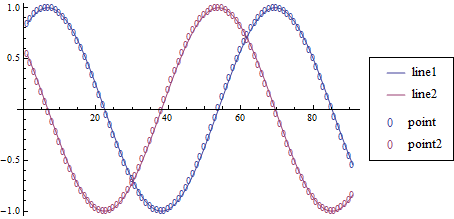No, it's not InputForm. Consider this example:
p = Show[ListPlot[{1}, PlotLegends -> "1"], ListPlot[{2}, PlotLegends -> "2"]]; This is the output of p // InputForm:

while this is what you'll see if you execute p and select the output and press Ctrl+Shift+I:

Can I get the output of Ctrl+Shift+I with a function rather than keyboard shortcut?
What? Why I'm interested in such a boring question? Well, I encountered this when trying to do some direct modification on the legends. Try the following example:
data1 = Sin@Range[1, 10, 0.1]; data2 = Cos@Range[1, 10, 0.1]; pline = ListLinePlot[{data1, data2}, PlotLegends -> {"line1", "line2"}]; ppoint = ListPlot[{data1, data2}, PlotMarkers -> "0", PlotLegends -> {"point", "point2"}]; pjoin = Show[pline, ppoint]; pjoin /. Legended[Legended[a_, {Placed[b_, c__]}], {Placed[d_, e__]}] :> Legended[a, Placed[Grid[{{b}, {d}}, Frame -> True], c]] 
The last line added one frame for the different sorts of legends. Dirty, right? And it'll be dirtier if we have more sorts of legends. However, if the output of p is baptized by Ctrl+Shift+I (actually you just need to copy and paste it) then a much simpler pattern can be used!:
(* copy and paste the graphics here *) /. Grid[a__] :> Grid[a, Frame -> True] The resulted graphics is the same so I'd like to omit it here.
